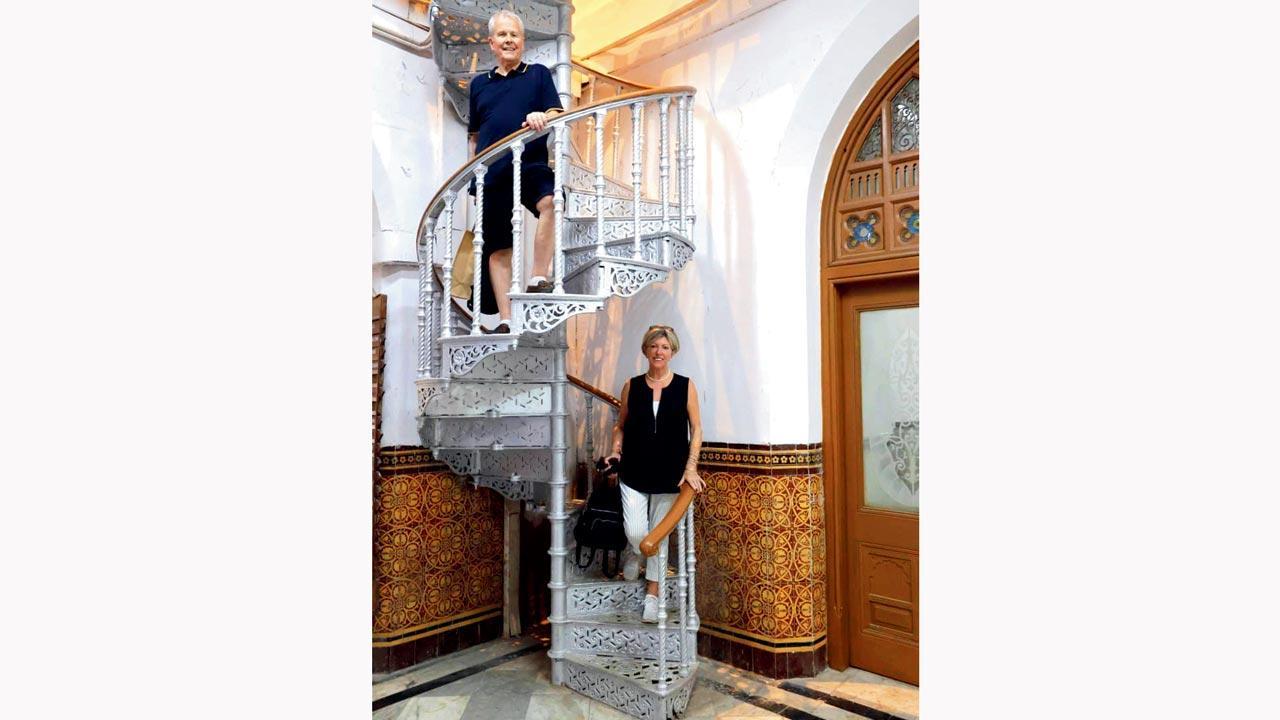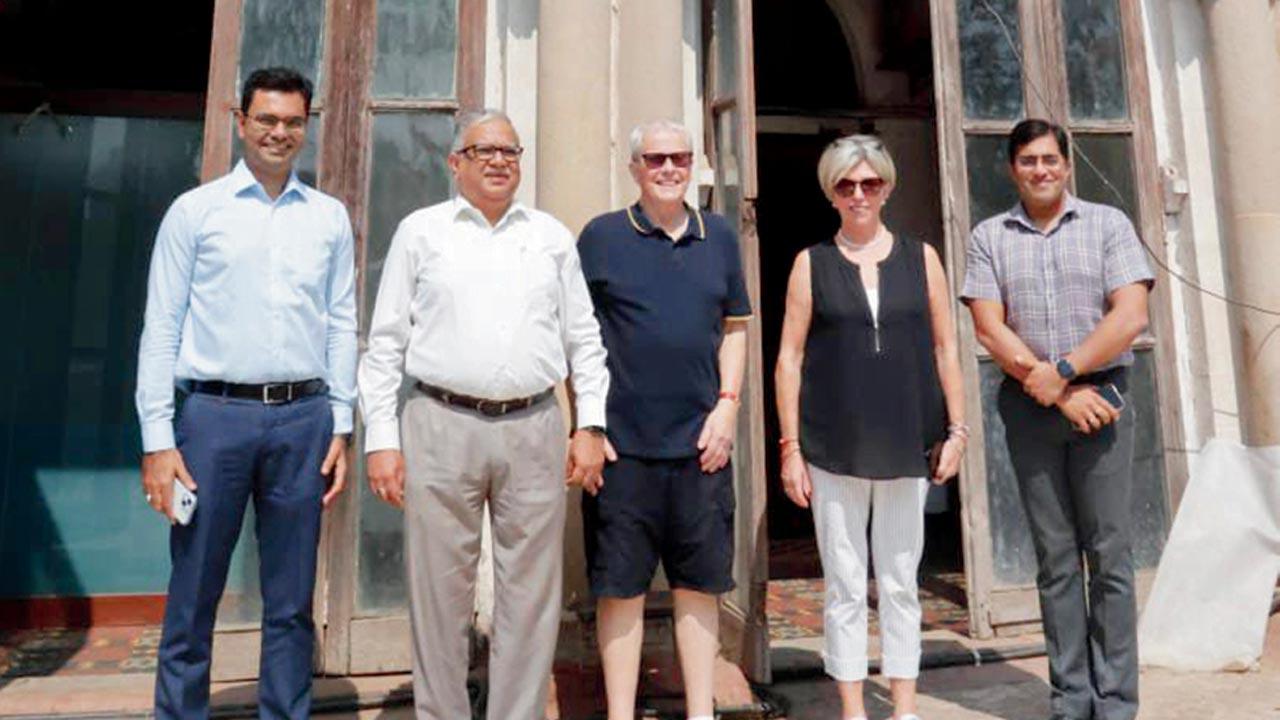Nostalgic visit to Churchgate heritage building reveals family’s deep connection with Railways

John and Janice inside the heritage building
Key Highlights
- A UK couple was nostalgic and emotional as they entered the Churchgate building
- In Mumbai, the UK couple was overwhelmed to visit the building
- John’s family has been with the Railways for over two generations
"I was overwhelmed by the visit to the Churchgate heritage building and could see where he used to work. I have no words to thank everyone who made it happen,” said John Edward Kennedy and his wife Janice, senior citizens from the UK, who were nostalgic and emotional as they entered the Churchgate building to see the office where John’s grandfather once worked.
ADVERTISEMENT
In Mumbai, in search of their grandfather’s office, the UK couple was overwhelmed to visit the building. “We were so glad to learn about our family’s history with the Railways and were overwhelmed that Western Railway has so well preserved its heritage. We were very touched by the feeling of being in the headquarters building, which completed 125 years of its construction in January 2024. The headquarters building has been maintained so well by the Railways, and the heritage gallery on the ground floor gave glimpses of the past,” an excited John said.
John’s family has been with the Railways for over two generations. His great-grandfather, John George Kennedy, joined the Railways, and his career saw him working at several locations in Rajasthan. Abu Road, where his son George Herbert was born, and Phulera, where his other son Edmund was born, and Ajmer are mainline stations. John George retired at Phulera, Rajasthan, in 1923. His son George Herbert Kennedy, the grandfather of the recent visitor John, described by his colleagues as having a ‘brilliant’ career with the civil service in India, was born more than 500 miles away, in the small town of Abu Road, in Rajasthan in North-West India, on the main railway line between Jaipur and Bombay.
 John and Janice with the Western Railway team
John and Janice with the Western Railway team
According to WR records, George Herbert’s first job was in Ajmer, at the age of 19, around 1906, in a relatively low, probably administrative, position in the local engineering department. He left Ajmer to work in Bombay sometime between 1906 and 1912. By then, he was a clerk in the construction supervising engineer’s office in Bombay, working for the Bombay, Baroda and Central India Railway (BB&CI) company, one of the biggest and most significant in India. He became chief clerk in 1914, based at Mahalaxmi. His department was responsible for rebuilding bridges, station yards, and other construction projects. He was promoted to chief clerk in the agent’s office in 1918. “His merit was becoming increasingly recognised, and he was promoted to second assistant secretary on July 1, 1919, becoming first assistant secretary in May 1921. He spent time as chief engineer in Parel from 1925,” the records add.
It was in the 1930s that he was posted in Churchgate. He rose up the organisation: in 1932 he is recorded as assistant secretary to the agent at Churchgate in Bombay, ultimately becoming secretary in the agents and general manager’s office of the BBCI. (The term ‘Secretary’ was then, as it was until the 1960s, used to define people holding significant roles in administrative and financial areas: it was the equivalent of today’s financial director)
He most likely would have risen even further, but it seems that he was dogged by bad health. In his obituary in the BB&CI company railway magazine, which he had founded in 1922, his career is described as ‘brilliant,’ with an encyclopaedic knowledge of railway matters.
He was also selected to represent the battalion and the Railways at the celebrated Delhi Durbar in 1911 when the new King Emperor, George V, and his Queen visited India for the first time and were feted everywhere they went. The Delhi Durbar was the most significant occasion of all, where some 12,000 people, most specially invited, were reviewed on parade.
He died at only 55 on 30 September 1942, in the Tata Memorial hospital in Parel, Bombay.
“Through Chandramohan from Green Life Foundation, we traced where our grandfather G H Kennedy worked with the then BB & CI Railway, now Western Railway, from 1905-42. Western Railway’s chief public relations officer Sumit Thakur supported us and managed to revisit our grandfather’s offices. We shared some interesting stories of our grandfather’s days of working with Railways with Ashok Kumar Misra, general manager, Western Railway. We will always remain thankful to everyone who has made it happen,” added John.
125 years
Age of the heritage building at Churchgate
1906
Year John’s granddad started working for the Railways
 Subscribe today by clicking the link and stay updated with the latest news!" Click here!
Subscribe today by clicking the link and stay updated with the latest news!" Click here!







